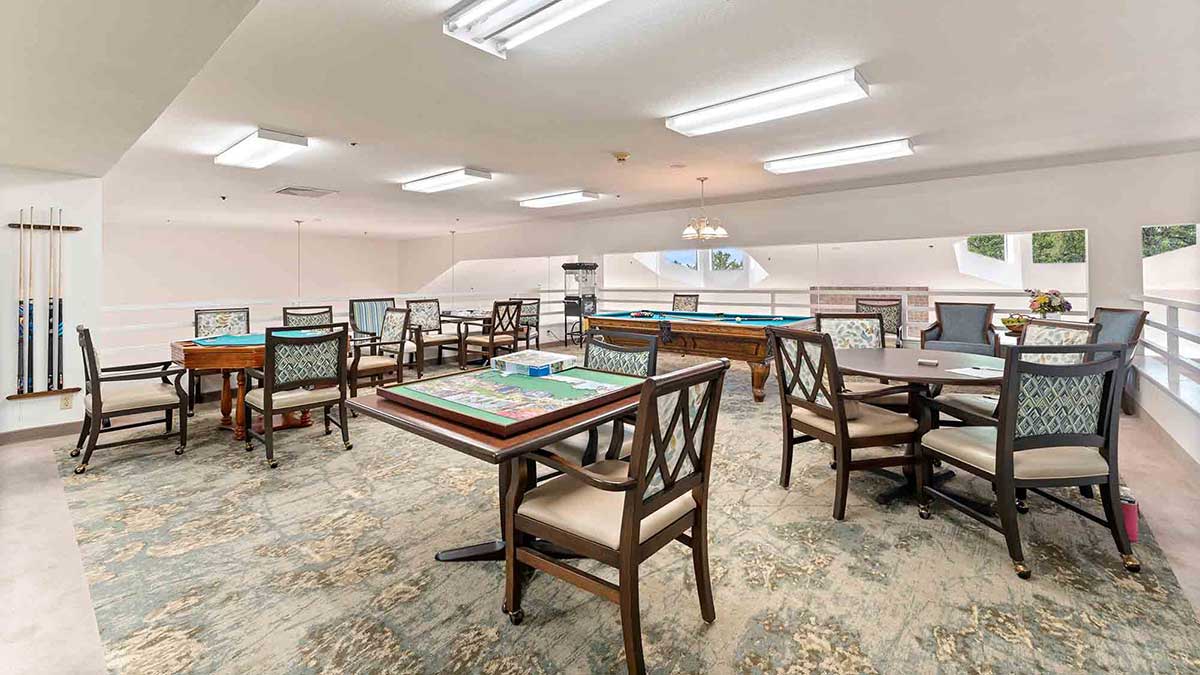Retirement. What images does it conjure up? A time to break free from the hectic pace of life? Adventure? Exploration? As enticing as that may sound, can all this freedom be too overwhelming?
Many of us find ourselves clinging to a daily routine schedule and passing by the joy and exhilaration that this new life chapter can bring.
Why Don’t We Want to Embrace Change and Explore New Life Experiences?
This paradox can be challenging to navigate. Everyone says they want to try new things and explore their hobbies, yet that’s not always what happens. Common sense tells us it’s natural to feel safe with the familiar and fear the unknown. Staying in your comfort zone feels too good to give up. However, life-changing events often push us toward new experiences, and embracing them can lead to personal growth.
Striking a balance between these two desires is challenging, but making the most of everyday living and enjoying free time is essential for your mental and physical well-being. The key to achieving balance is deciding how frequently and to what extent you should step out of your comfort zone.
Statement of Fairness: Considering senior living options for yourself or a loved one? We’re here to help at every step. And even though we specialize in independent living communities, our goal is for YOU to find your best path to gracious retirement living, and part of how we achieve that is by providing reliable information on all types of senior living, not just the ones we offer. When our offerings serve as useful illustrations to a specific topic, you can find that information in the attached sidebar.
Embrace Change with Confidence
Retirement is not the end but the beginning of a transformative journey filled with endless possibilities. In these days of extended and improved lifespans, you can truly seize the day. Pursue your passions, explore new interests, and connect with more people. Experience senior living in a way that supports independence and enriches your daily routine schedule. Embrace change. It all starts with a simple word: Yes.

Saying yes can be the cure for boredom and the spark that gives you a fresh start with longtime interests, connections, and passions. However, letting go of the anxieties and fears holding you back—such as anxiety about moving or concerns about transitioning into retirement—is not always as easy as it sounds. That’s why we’re here with a few tips to help you embrace change and gently nudge you out of your comfort zone.
Embrace Change by Saying Yes
When we say yes to a new direction, we commit to opening ourselves up to life’s possibilities. We inspire ourselves to embrace change, combat boredom, and push beyond what we normally do every day. Moving anxiety or fear of change can make transitions difficult, but knowing the benefits of senior living and focusing on the positives can ease the process.
Think back to the interests you’ve had throughout the years. Maybe gazing at the stars once filled you with awe and wonder. Now that you’re retired, open yourself up to a new world of learning. Say yes and reignite your passion by enrolling in an online astronomy course, reading books about space exploration, or attending a lecture series on astrophysics. Just think: In 2018, 96-year-old scientist Arthur Ashkin won the Nobel Prize for his work with lasers.
Knowing that lifelong learning is key to aging well, recent studies have shown its positive impact on seniors’ well-being. As older adults continue to seek learning opportunities throughout their lives, staying engaged in education—whether formal or informal—helps them remain independent, fulfilled, and mentally strong, especially those who may be more vulnerable. Supporting independence through lifelong learning fosters confidence and self-sufficiency.
The findings highlight the importance of making community-based learning programs widely available. By promoting lifelong learning, we can create more inclusive and supportive environments where older adults can grow, connect, and thrive in their daily lives.
The daily activities and events offered in retirement communities help with living in transition by encouraging seniors to explore new passions, reconnect with old interests, and embrace life experiences. Every activity where older adults engage their minds supports cognitive wellness and helps them transition with care.
Embrace Change by Overcoming Obstacles
Mohr Keet made history as the world’s oldest bungee jumper at the age of 96, proving that age should never be a barrier to adventure. Born in 1924, he lived through significant historical events and maintained a mindset of resilience and determination.
While most people his age choose a quieter lifestyle, Keet embraced the extreme sport of bungee jumping, defying expectations and showing that the human spirit is capable of incredible feats. His daring leap was met with skepticism, but he was determined to prove that it was possible, embodying the belief that life should be lived to the fullest.
Keet’s successful jump was more than a personal triumph—it became an inspiration for people of all ages to challenge their own limits. His experience shattered stereotypes about aging and encouraged older individuals to pursue their dreams fearlessly. With his bold leap, Keet reminded the world that adventure and excitement have no expiration date. His legacy continues to inspire, proving that it’s never too late to push boundaries and seek new thrills.
When you find yourself asking, “What’s the worst that can happen?” and can’t come up with a realistic answer, why not try it out? These acts of courage and determination motivate us to embrace change and overcome obstacles. You’ll feel accomplished and proud.
Three Tips to Help You Embrace Change
1. Conquer your anxieties.
Knowledge is power. If you’re afraid to take that first step, learn more about whatever interests you. Want to take a trip but have reservations? Research their local news online. Find others who have done that and write them a letter or an email to see if they’d share their experiences with you. You’ll conquer your anxiety, learn important tips for your adventures, and maybe even make some new friends who share your passion. Some senior communities have travel programs that will boost your confidence and enjoyment while providing you the comforts of a community lifestyle abroad.
2. Reframe challenges into opportunities to grow.
As we age, we come across challenges, but rather than letting them overwhelm us, we can view them as a way to help us learn and develop. When we reframe our perspective, we can approach obstacles with positivity and overcome them more easily. If we look at them as simply opportunities in disguise, we unlock our potential and amaze ourselves with how much we can accomplish.
Harriette Thompson, a classical pianist and cancer survivor, wasn’t much of a runner throughout her life. However, when a friend was raising money for a cancer charity, she decided to step out of her comfort zone. At the age of 76, she entered the Rock ’n’ Roll San Diego Marathon. Originally planning to walk the distance, she found the courage to change her mind.
“I noticed when I got there that everybody was running, so I decided to run. I decided it was a good cause, and I tried again the next year and the next year.”
At 92, Harriette became the oldest woman to finish a marathon – so far.
3. “Slow is smooth and smooth is fast.”
That’s the Navy SEAL way of saying rushing less results in achieving more. Taking a slower, less stressful approach lets you ease into something new and get the most from your experience. Putting this idea into practice can:
- Reduce Stress & Anxiety – Taking a slow and steady approach helps prevent us from feeling overwhelmed, making change more manageable and enjoyable.
- Build Confidence & Adaptability – Easing into new experiences allows time to adjust, learn and grow without pressure, leading to greater success in the long run.
- Enhance Long-Term Success – A smooth transition into change increases the chances of lasting benefits, helping you fully embrace new opportunities without burnout.
Embrace Change With the Help of Others?
- Join a club or group focused on an activity you want to try. Whether it’s painting, dancing, or book discussions, new experiences are more enjoyable when shared.
- Getting over your fears—whether it’s anxiety over moving, starting a new hobby, or meeting new people—can be as simple as starting a conversation. Find support and encouragement through your family, church, or social group.
- Recruit friends to help you stay on track. Having a support system can make transitions smoother and provide the motivation you need to keep going.
- One of the best things about experience senior living is meeting people from all walks of life. With so many life experiences gathered in one place, you’re bound to find someone who has navigated similar challenges and can offer guidance on how to transition into retirement or embrace new routines.

Say Yes to an Action Plan
Set your goals with these three ideas in mind.
- To embrace change with a positive attitude, make a conscious effort to say yes more often. This doesn’t mean making big, life-changing decisions every day. The yes way of living is easier when you start small. Try a new dish at dinner. Take a short morning walk. Strike up a conversation with someone new. Each small step supports independence and helps build confidence.
- Be spontaneous. Shake up your daily routine schedule occasionally and welcome new experiences as they come. Flexibility makes it easier to adapt to change and enjoy the unexpected moments life brings.
- By keeping an open mind, you’ll be more likely to recognize and take advantage of opportunities that enrich your life and make transitioning with care feel natural.
Embrace Change with Open Arms
There’s no escaping change, so make it your ally. Use it to take charge of your life. Retirement is the perfect time to rest, but let that rejuvenation invigorate you to explore new interests, create meaningful connections, and experience the benefits of senior living. As one yes leads to another, you’ll find yourself more comfortable with living in transition and more excited about what’s next.
An exciting world awaits you outside your comfort zone. All you have to do is say yes!
Interested in learning about the gracious retirement living at Hawthorn communities? Take a moment to find a community near you.
DID YOU ENJOY WHAT YOU JUST READ?
Join our exclusive community and subscribe now for the latest news delivered straight to your inbox. By clicking Subscribe, you confirm that you agree to our terms and conditions.
Make Life More Fun at Ashton Gardens

Looking for independent senior living in Portland, ME? A stylish apartment, first-rate chef-prepared meals and exciting daily activities await you at Ashton Gardens.
You’ll enjoy convenient services and amenities at one inclusive monthly rate. From spotless housekeeping services to friendly transportation, you’ll experience a carefree lifestyle filled with friends and fun.
Ready for a Move Up at Parkrose Chateau?

Discover carefree independent senior living in Portland, OR, at Parkrose Chateau. Our community offers a welcoming environment where you can focus on doing what you love.
Enjoy delicious meals, engaging activities, and top-notch services and amenities included in your monthly rate. With more free time, you can make new friends and explore all the exciting opportunities that retirement has to offer.


Frequently Asked Questions:
How do I know when it’s time to add more support or to make a change of address?
It’s best to start advance care planning while you are healthy and able to make decisions, rather than waiting until a crisis occurs. Involve your primary care physician, specialists, family members and any other trusted individuals in the conversation. These discussions help ensure everyone understands your values and preferences, and that your advance care plan truly reflects your wishes for future medical care.
To determine the right level of care, consider your need for support with daily activities, safety, health conditions and desire for independence. A needs assessment can help identify whether independent living, assisted living, skilled nursing, memory care or in-home care best matches your situation.
What is best, independent living or assisted living?
Both independent living and assisted living communities focus on enriching life for older adults, providing a worry-free lifestyle, social activities and shared dining experiences.
Independent living is ideal for older adults who remain mobile and can handle daily self-care on their own. These communities often include thoughtful safety features – like nonslip flooring, grab bars and wide hallways – but they do not provide staff to manage or administer medications.
What factors should I consider when choosing a senior community?
Key factors include the quality of life offered (such as social activities and community atmosphere), the level of care and support provided, budget and financial planning, legal and contractual aspects, and access to professional advice. Visiting communities in person, reviewing contracts and talking with trusted advisors can help you make an informed decision.
FIND YOUR COMMUNITY
Related Articles
STORIES, INSIGHTS & RESOURCES
As you and your loved ones navigate the exciting opportunities retirement presents, thoughtful planning is key. Stay informed with empowering articles for seniors covering health, lifestyle, finance and more.

Lively Friendships at Every Age: How Making Friends Leads to Healthy Aging
by Julia Hubbel Feeling lonely? You’re not alone. In fact, those of us who feel lonely are in excellent company, yet remarkably, we’re not finding…

How to Talk to Your Adult Children About Your Financial Situation

The Potent Power of Positive Attitude on Whole-Person Wellness for Seniors
by Julia Hubbel Most of us want our later years to be easier, right? Less worry, less stress, more happiness and greater joy. After a…

Healthy Boundaries for Seniors: Maintaining Independence with Adult Children
Chronicles Of The Heart
RESIDENTS SAY INDEPENDENCE IS A TOP PRIORITY
Below, residents explain how much they appreciate the freedom they experience at our independent living community. It’s empowering to continue to make your own decisions, and you’re free to create your day around your personal interests.


